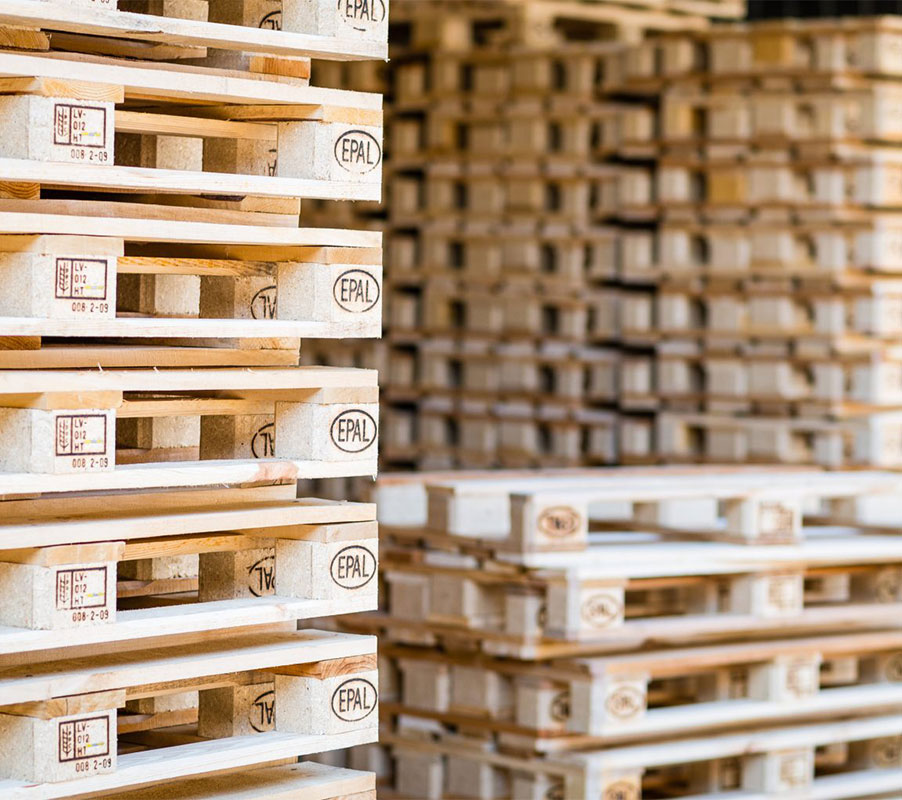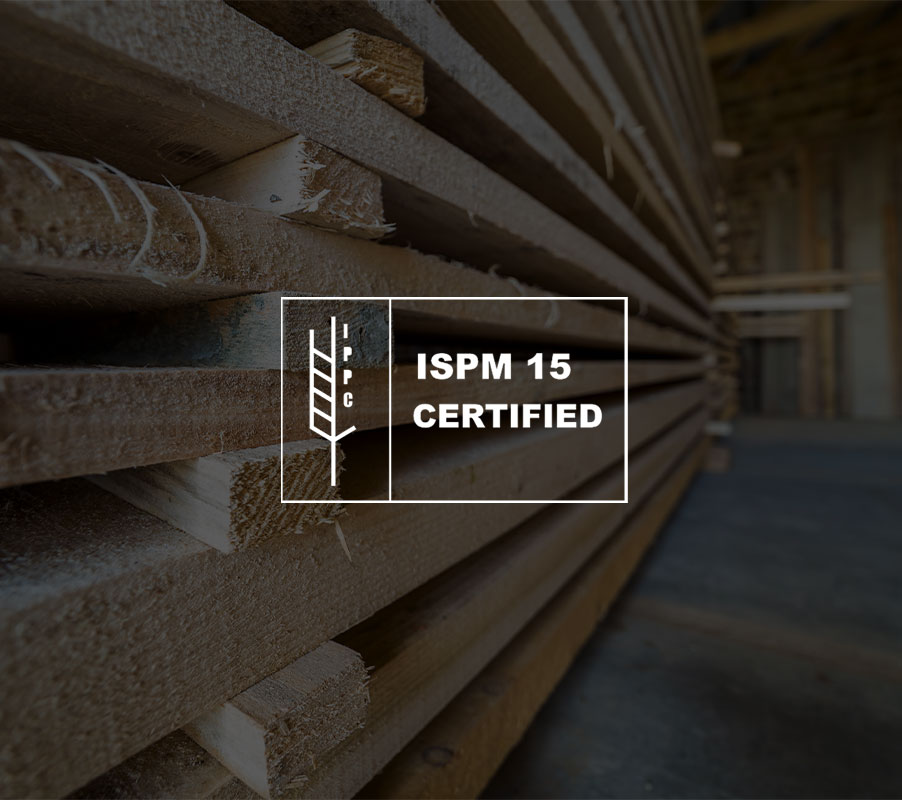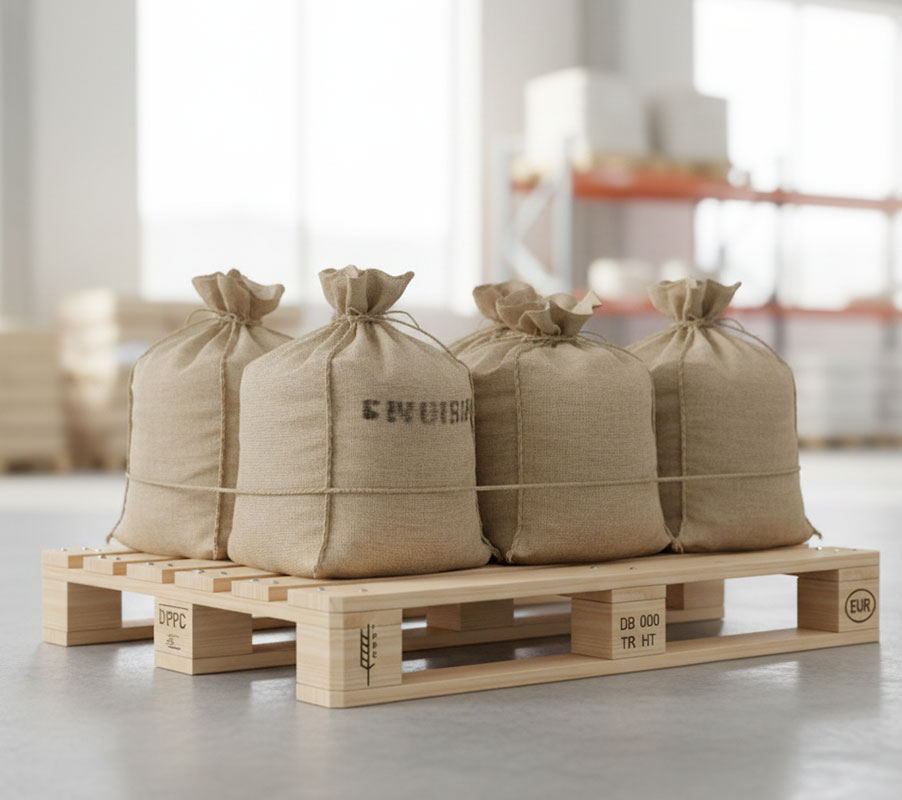
Today, pallets are the most common transport tools used in logistics, production, and warehousing processes. Among these, Euro pallets (EPAL) stand out for their durability, standardized dimensions, and international recognition.
In this article, you’ll find essential criteria for understanding Euro pallet dimensions, their standards, and how to choose the right pallet for your business needs.
What Is a Euro Pallet?
A Euro pallet is a wooden pallet produced according to the dimensions, material, and quality standards defined by the European Pallet Association (EPAL). These pallets provide a standardized solution for transportation and storage processes worldwide—especially across Europe. Each EPAL pallet has a specific size, load capacity, and stamping system that guarantees quality and traceability.
Most Common Euro Pallet Sizes
The EPAL system includes several size types, but the most commonly used ones are as follows:
| Pallet Type | Dimensions (cm) | Load Capacity | Common Usage Areas |
|---|---|---|---|
| EPAL 1 | 80 × 120 | ~1500 kg | General freight transport |
| EPAL 2 | 100 × 120 | ~1500–1750 kg | Wide loads, automotive industry |
| EPAL 3 | 100 × 120 | ~1750 kg | Industrial and chemical sectors |
| EPAL 6 (yarım palet) | 80 × 60 | ~500 kg | Retail and shelving systems |
These dimensions are designed to be fully compatible with forklifts and pallet jacks, ensuring seamless operation across storage and logistics systems.
Importance of EPAL Standards
The EPAL system sets not only dimensional but also material quality, production tolerance, and safety criteria. If a pallet carries the EPAL stamp, it certifies that the pallet:
- Was produced in a certified manufacturing facility,
- Has undergone heat treatment (ISPM-15),
- Meets standard load capacity requirements,
- Is recyclable and repairable.
Thanks to these features, EPAL pallets are accepted in international trade and can be used with the same equipment across different countries.
Difference Between 80×120 and 100×120 Sizes
When choosing between the two most common sizes—80×120 (EPAL 1) and 100×120 (EPAL 2)—there are a few key points to consider:
- 80×120 cm: Ideal for compact spaces and fully compatible with European standard shelving systems.
- 100×120 cm: Preferred for larger base products, especially in the automotive and white goods industries.
Both models are forklift-compatible, highly durable, and can be used repeatedly without compromising quality.
Advantages of Euro Pallets
- Standardized Quality: Every EPAL pallet maintains consistent specifications.
- High Durability: Designed for heavy-duty and long-term use.
- International Compatibility: Recognized across Europe and many other countries.
- Repairable Structure: Provides sustainability and reduces operational costs.
Tips for Choosing the Right Pallet
When selecting pallets, consider the following factors:
- Type of Load: The pallet’s capacity must match the weight of the goods.
- Storage Conditions: Choose dimensions compatible with your shelving system and forklift type.
- Export Requirements: Pallets without the ISPM-15 stamp cannot enter many countries.
- Certification: The EPAL mark guarantees quality and safety.
Conclusion: Safe and Efficient Logistics Through Standard Dimensions
The fact that Euro pallet dimensions are defined according to international standards helps businesses minimize errors in transportation, increase efficiency, and reduce costs. Using pallets that comply with the right size and certification not only improves operational performance but also plays a crucial role in environmental sustainability.
İncir Palet manufactures both new and used EPAL-standard pallets, helping businesses offer safe and eco-friendly logistics solutions in international trade.





